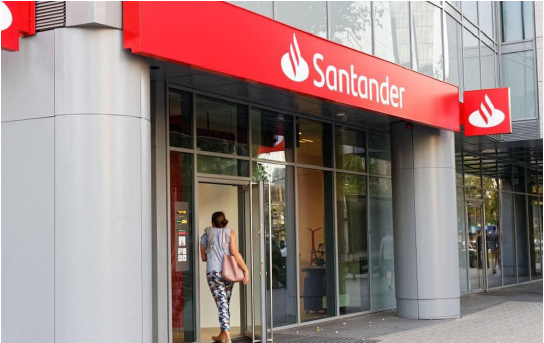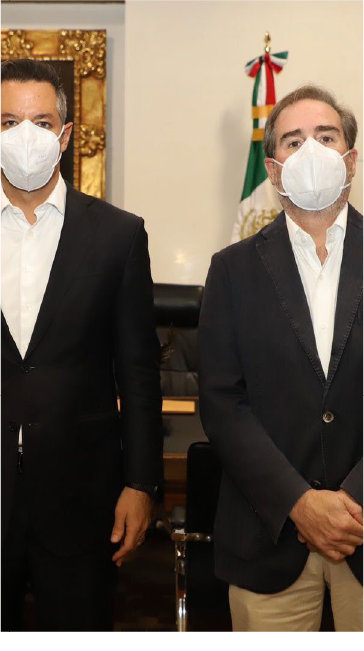our customers
Interactions with our Customers
We offer our customers a series of simple and tailormade products through a multi-channel approach, providing them with access however, whenever and wherever they need. We are extremely interested in listening to them in order to better understand their thoughts regarding our services and whether or not we are meeting their expectations. The end goal is to improve their experience.
Customer Service
We strive every single day to offer all our customers outstanding and tailormade services that are accessible, fair and innovative because we are convinced that great service amounts to customer satisfaction. To listen to our customers, we have a Central Customer Service and Assistance Unit, which acts as our communication channel with customers, and which comprises the following areas:
Customer Satisfaction and Quality
We have a number of support channels and strategies to help drive the customer satisfaction by listening to them and improving their experience. We have achieved this through a range of products and services that adapt to the needs and expectations of each of our customers.
Emotional HUB
This program has allowed us to create unique experiences for our customers and improve the relationship they have with the Bank. In 2021, we coordinated the following HUB programs:
- 1.First Contact Resolution: Improving and capitalizing customer experiences by considering the impact of a first contact resolution.
- 2.Mortgage Experience: Defining and implementing an experience throughout the customer lifecycle in order to create a memorable experience during the application process and subsequent relationship.
- 3.Insurance Experience: Defining and implementing an end-to-end experience - encompassing the entire customer life cycle - monitoring and ensuring the correct sales processes, engagement and protection renewal.
- 4.Employee Experience: Designing an experience to engage with our employees by promoting communication and the leadership of each person working at Santander Mexico.
- 5.ONE Experience: Promoting a Data Driven culture by integrating information and data management methodologies to create a value insight that drives actions to perfect the Santander Mexico product, segment and channel experience.
- 6.Payroll: Offering employees who are payroll holders a great experience from the onboarding process to them using the Bank’s products and benefits.
- 7.SME: Transforming the experience of SME customers, attracting new customers, and increasing their permanency with the Bank.
- 8.BEI: Improving the experience for BEI customers who are in the process of opening an account, in addition to defining the roadmap for digital transformation.
- 9. Credit Card Recovery: Extending the customer experience during the credit card payment process and increasing collections through digital tools.
- 10.Biometrics: Decreasing enrollment times (95% of enrollments in 6.5 minutes) and increasing the percentage of successful enrollments from 88% to 95% in order to improve the customer experience during this process.
- 11.Private Banking: Improving the experience of Private Banking customers during their time at the Bank, in addition to increasing engagement and transactions with customers from this segment.
- 12.Credit Cards: Improving customer experience during the application process and use of the LikeU credit card.
NPS (Net Promoter Score)
We have implemented the NPS (Net Promoter Score) Recommendation indicator as part of our strategy to listen to the opinions of our customers and detect any areas of opportunity. This has allowed us to monitor their complaints and address them adequately, in addition to driving our performance and streamlining our customer service.
The majority of the Bank’s surveys are conducted via Qualtrics, a tool that is directly managed within the Bank, allowing us to carry out daily evaluations of our customers’ experiences through online feedback.
During 2021, our NPS for mobile channels was 68, while for Internet channels it was 51. This year, the surveys were conducted internally, which is why the number of opinions was higher and more diversified. This was a positive step in continuing to identify our areas of opportunity and improving our customer service.
The Santander Touch
Our employees are a key part of improving our customer experience within our branches. They are committed to ensuring customer satisfaction, actively participating in a process to make their experience a unique one. They focus on the following actions:
- • Before opening the branch, they must make sure that everything is in its place before welcoming customers.
- • Our employees then welcome our customers, listening to them and solving their problem before saying goodbye.
- • Our employees must find out the customer’s name and call them by it while helping them, identify the relationship they have with the Bank, and make them feel part of the family.
- • Our employees invite them to use our digital channels.

In 2021, we rolled this program out to our Contact Center and Central Areas. Our major actions during the year included presenting awards to the best Santander Personal Offices and Branches, recognizing more than 200 employees for having the best NPS during the first half of the year.
At the Contact Center, we presented two commemorative plaques and handed out 5,000 ID badge holders to employees for having increased NPS between August 2020 and August 2021. We also recognized the outstanding efforts of 100 employees for their NPS during Q3 2021.
In Central Areas, we handed out more than 1,600 kits to employees who had the highest number of mentions for their performance in the NPS survey.
Accessibility
As part of our commitment in our role as a Responsible Bank, we promote financial inclusion through our correspondent banking network. We have increased the number of people who have access to our financial services, offering them basic banking transactions without having to visit a branch.
*People who do not have access to basic banking services because they live in remote and/or rural areas.
Seniors Program – Customers
This program focuses on a sector with the following traits: income below MXN $11,000 (€440), a source of lifetime income, little or no use of technology and digital media, loyal customers with good credit ratings, specialized drug and medical requirements, limited access to social security.
The value proposition for this sector focuses on offering them priority service at our branches, including a differentiated loan application policy, insurance-based consumer credit products, a differentiated sales channel available via the Contact Center with differentiated scripts adapted for this group, and special follow-up processes, especially for victims of fraud.
Oaxaca Police
The goal of this program is to create a value proposition for our customers who are payroll holders from the Oaxaca State Ministry of Public Security with income below MXN $4,310.04, offering them liquidity when faced with a difficult situation and/or allowing them to improve their credit conditions with the previous disbursement authorities.
Inclusive Branches
During 2021, we continued working to ensure that our branches are increasingly inclusive. We incorporated an internal TV program for branch employees that contains a series of training spots about inclusive terms, topics regarding disability, rules of engagement, what to do and what not to do when interacting with someone who has a disability, and the major barriers they face.

We also developed inclusive service index cards to help branch employees better serve people with disabilities.
Diversity and Inclusion - Customers
We held a number of focus groups with vulnerable people or those who have historically been discriminated against (people with disabilities, the elderly, LGBT+ people, and foreigners) to understand the main needs and barriers they face when requesting financial products and services or accessing a branch.
We also created inclusive service index cards for branch employees to offer customers a more equal and inclusive experience.
We also reviewed the physical and digital accessibility of our branches, and we developed a plan of action to address any areas of opportunity.
None of this would be possible without our employees, which is why we offer them training in marketing, internal communication, external communication, digital accessibility, and inclusive communication and language.




